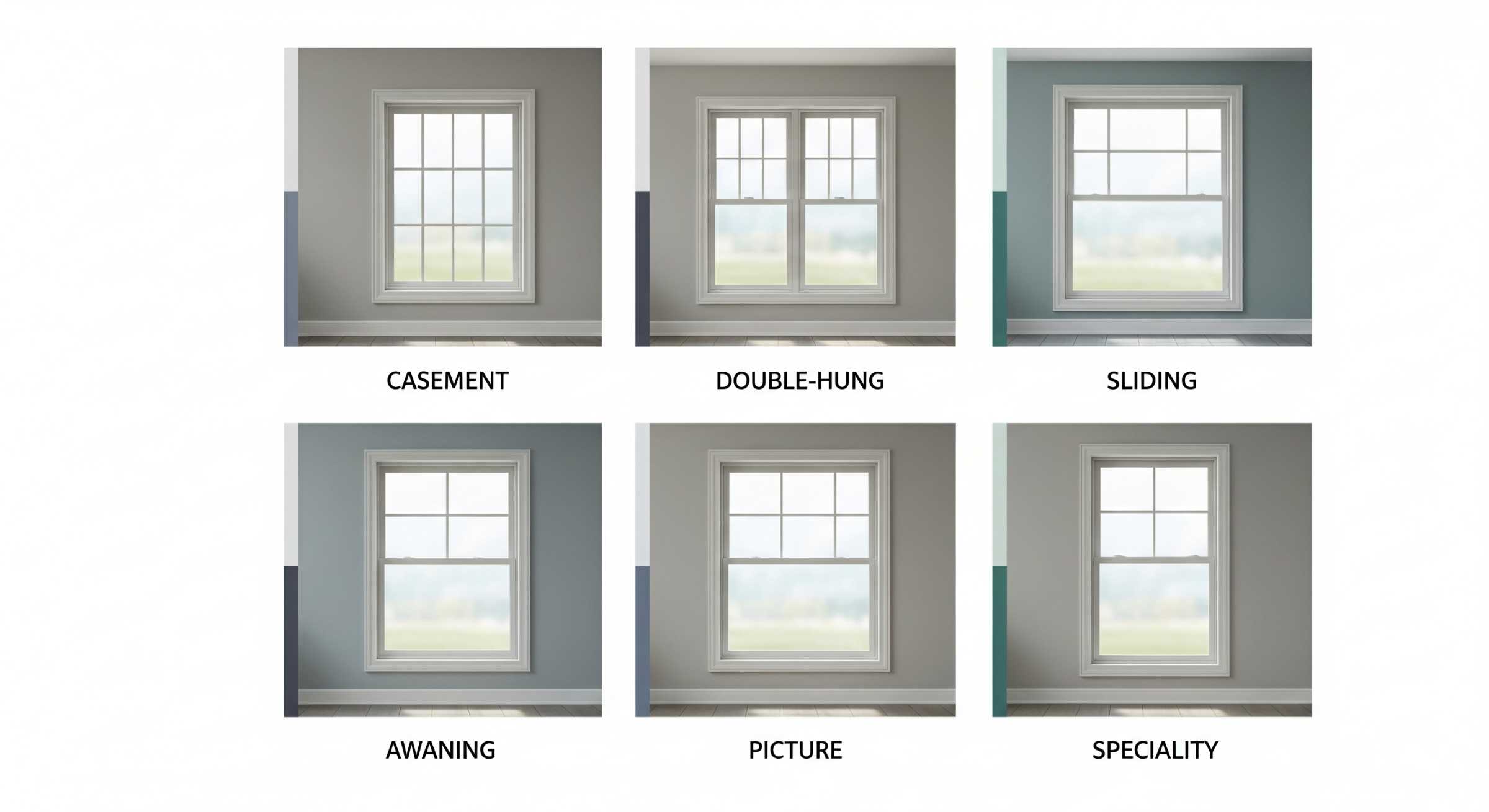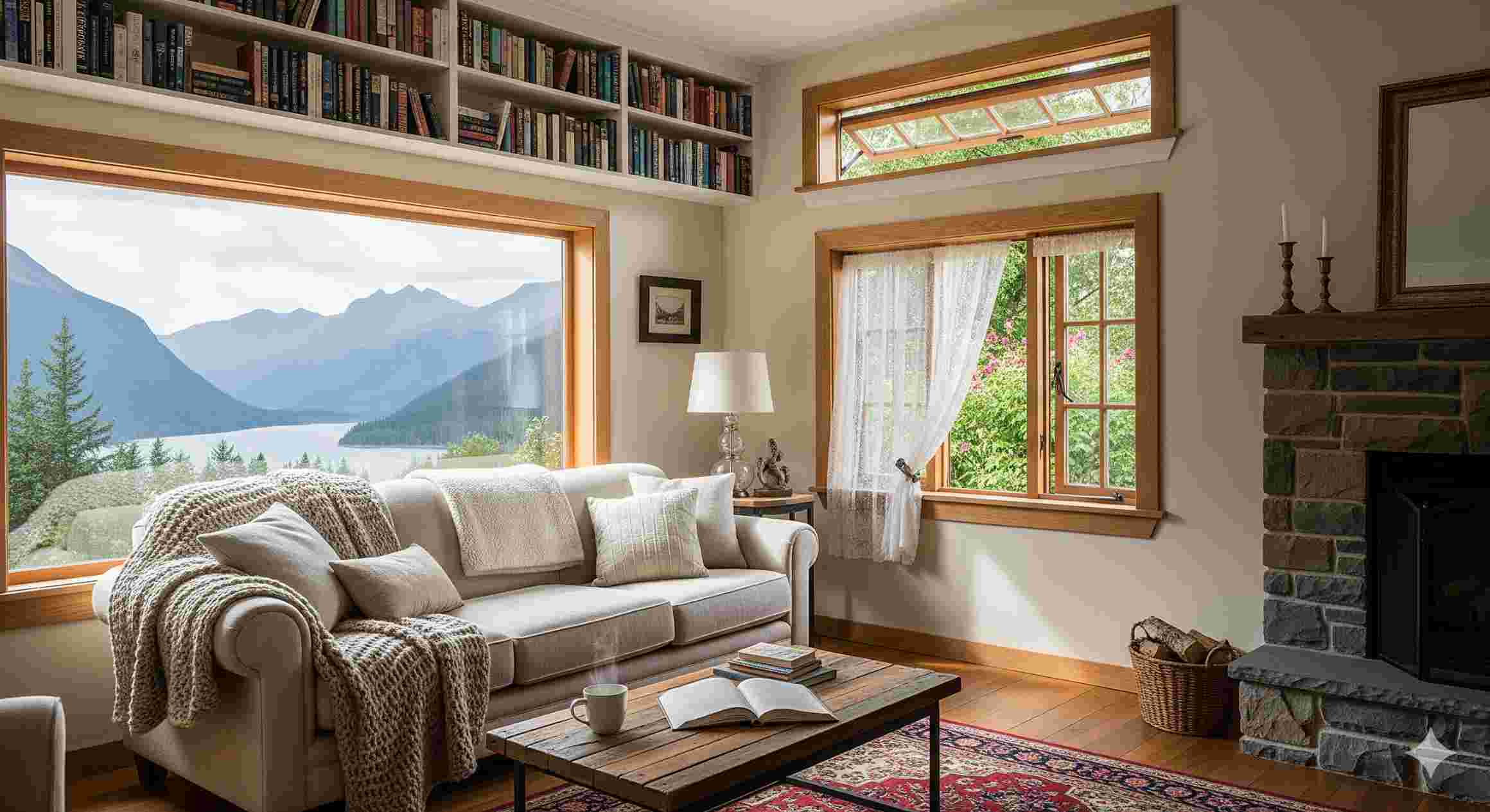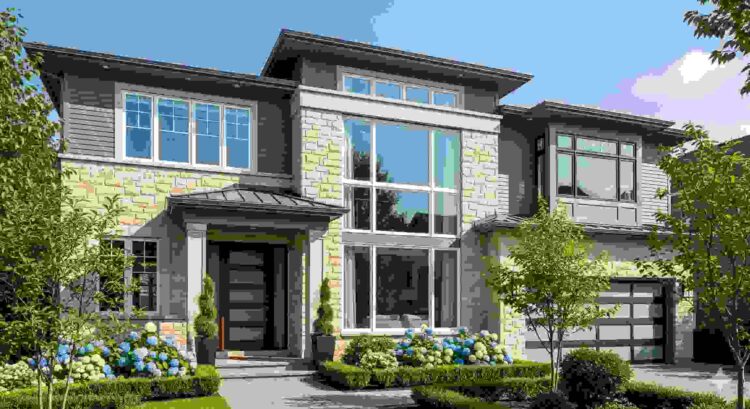Choosing the right windows can transform your home’s look, improve airflow, and reduce energy costs. This guide covers popular window styles, their benefits, drawbacks, and best uses, helping you make an informed decision that suits your home’s design and your budget.
Casement Windows
Casement windows are attached to the frame by one or more hinges at the side and swing outward to open, usually with a crank handle. This design creates an unobstructed view and allows for excellent ventilation.
Benefits and Drawbacks
- Pros: When closed, the sash presses tightly against the frame, creating an airtight seal. This makes casement windows one of the most energy-efficient styles available. The crank mechanism is easy to operate, making them a great choice for hard-to-reach areas like over a kitchen sink.
- Cons: Because they open outward, they may not be suitable for ground-floor areas next to high-traffic zones like walkways or patios. The mechanical parts of the crank can also wear out over time and may require maintenance.
Ideal Placement
Casement windows are perfect for rooms where you want to maximize airflow and enjoy a clear, open view, such as living rooms, sunrooms, and kitchens.
Double-Hung Windows

Double-hung windows are a timeless classic, featuring two separate sashes that slide up and down within the frame. You can open either the top sash, the bottom sash, or both at once.
Advantages and Disadvantages
- Pros: This style is incredibly versatile and suits many architectural designs, from traditional colonial to contemporary homes. Opening the top sash allows for ventilation while keeping the lower part of the window closed, which is a useful safety feature for homes with small children or pets. They are also easy to clean, as many modern versions allow the sashes to tilt inward.
- Cons: The meeting rail where the two sashes lock can slightly obstruct the view. While modern designs have improved, they are generally not as airtight as casement or picture windows, which can impact energy efficiency.
Architectural Compatibility
Their classic look makes them a go-to choice for traditional homes, but their simple, clean lines work well in modern designs too.
Sliding Windows
Sliding windows, also known as gliders, operate on a track, with one or more panels sliding horizontally past another. They are a simple, functional, and popular choice for modern homes.
Space-Saving Design and Maintenance
- Pros: Since they don’t swing outward, sliders are an excellent space-saving option for rooms facing patios, decks, or walkways. They have fewer moving parts than casement or double-hung windows, often leading to greater durability and less maintenance.
- Cons: Only half of the window can be open at a time, which can limit ventilation compared to a casement window of the same size. The tracks can also collect dirt and debris, requiring occasional cleaning to ensure smooth operation.
Suitability for Modern Homes
Their sleek, minimalist design and wide horizontal orientation make sliding windows a perfect match for contemporary and mid-century modern architecture.
Awning Windows
Awning windows are hinged at the top and open outward from the bottom. They are often smaller than other window types and are frequently placed higher up on walls.
Ventilation and Weather Protection
- Pros: The biggest advantage of awning windows is their ability to provide ventilation even during a light rainstorm, as the angled sash acts as a cover. Like casement windows, they create a tight seal when closed, offering good energy efficiency.
- Cons: Their smaller size means they provide less light and airflow than larger window styles. They also project outward, which can be an issue in high-traffic areas.
Placement in Bathrooms and Kitchens
Their unique design makes them ideal for bathrooms and kitchens. You can place them high on a wall to maintain privacy while still allowing steam and odors to escape.
Picture Windows

Picture windows are large, fixed panes of glass that do not open. Their sole purpose is to frame a view and let in the maximum amount of natural light.
Maximizing Light and Views
- Pros: With no moving parts or lines to obstruct the view, picture windows offer the clearest, most expansive sightlines possible. They are perfect for showcasing a beautiful landscape, garden, or city skyline.
- Cons: The primary drawback is the lack of ventilation. For this reason, they are often paired with operable windows, like casements on either side, to allow for airflow. Their large glass surface can also lead to significant heat gain in the summer and heat loss in the winter if not properly insulated.
Energy Considerations
To mitigate energy loss, it’s crucial to invest in high-quality, energy-efficient picture windows. Look for options with double or triple-pane glass, low-emissivity (Low-E) coatings, and gas fills. High-quality residential glass, like that in Logan, Utah, and other areas are designed to handle diverse weather conditions.
Specialty Windows
Specialty windows come in custom shapes and sizes, from arches and circles to octagons and triangles. They are used to add a unique architectural element and create a custom look.
Unique Shapes and Design Impact
- Pros: Custom windows can become a stunning focal point in any room, adding character and visual interest that standard windows can’t match. They can be designed to fit unusual spaces or complement a specific architectural style.
- Cons: Specialty windows are typically fixed and do not open. They are also more expensive than standard-sized windows and can have a longer lead time for manufacturing and installation.
What to Consider When Choosing Your Windows
Before making a final decision, think about these key factors:
- Energy Efficiency: Look for ENERGY STAR® ratings, Low-E coatings, and multiple panes of glass to help keep your home comfortable and reduce your utility bills.
- Aesthetics: Your windows should complement your home’s architectural style and your personal taste. Consider the color, material, and grid patterns.
- Budget: Window prices vary significantly based on style, material, and features. Set a realistic budget that includes both the cost of the windows and professional installation.
Conclusion
Choosing the right window style involves balancing style, function, and budget. Understanding your options and consulting a professional can help you find the perfect fit for your home.




